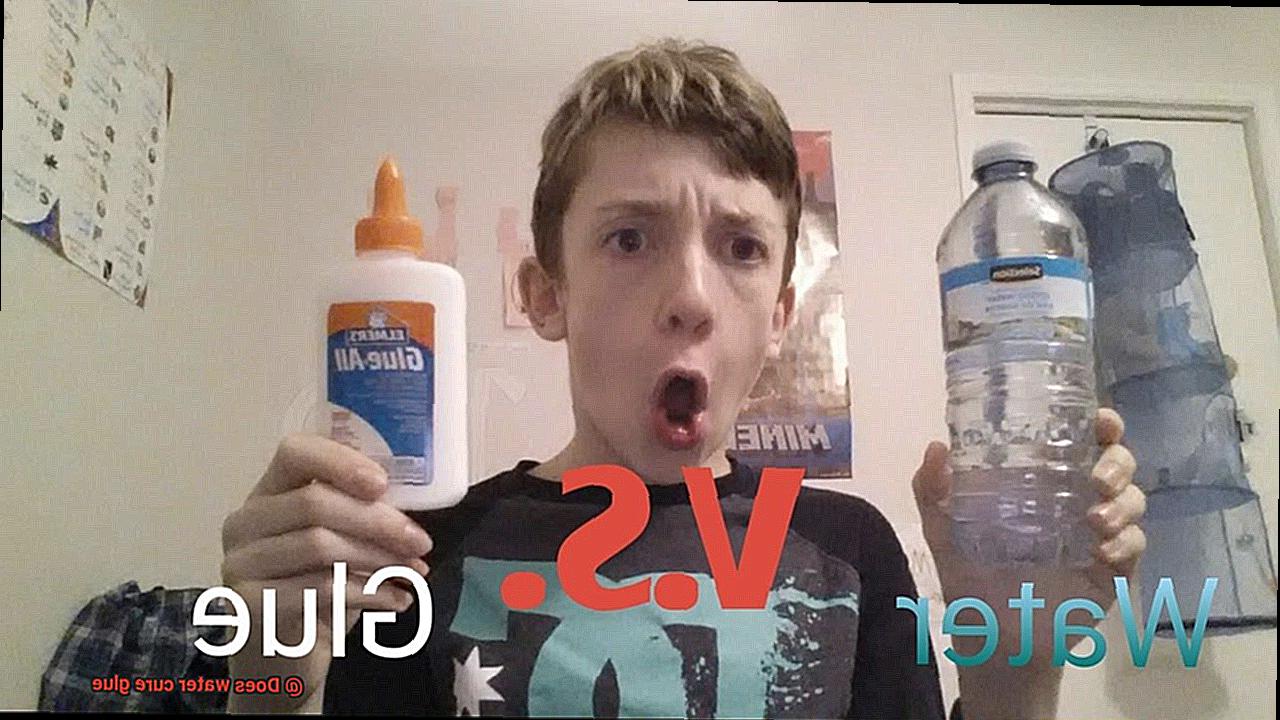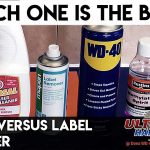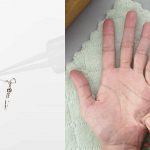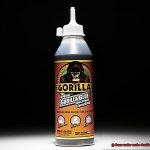Gorilla Glue is a polyurethane adhesive that boasts immense strength, making it a go-to for DIY enthusiasts and professionals alike. Whether you’re fixing a broken vase or creating a piece of furniture, Gorilla Glue is a popular choice. However, there’s an ongoing debate in the DIY community about whether water can make Gorilla Glue stronger.
If you’re anything like me, you’ve likely heard conflicting opinions on the matter. Some swear by its effectiveness, while others claim it makes no difference at all. So what’s the truth?
In this blog post, we’ll explore whether water truly does enhance the strength of Gorilla Glue. We’ll delve into the science behind this miraculous adhesive and provide practical tips for using it effectively.
By the end of this post, you’ll have a crystal-clear understanding of whether water can improve Gorilla Glue’s strength. So if you’re curious about this adhesive and want to know more, keep reading.
Does Water Make Gorilla Glue Stronger?
Contents
- 1 Does Water Make Gorilla Glue Stronger?
- 2 The Science Behind the Reaction of Water and Gorilla Glue
- 3 Benefits of Adding Water to Gorilla Glue
- 4 Precautions to Take When Adding Water to Gorilla Glue
- 5 How to Use Water with Gorilla Glue for Maximum Strength
- 6 Different Types of Gorilla Glue and Their Reactions with Water
- 7 Common Mistakes People Make When Using Water and Gorilla Glue Together
- 8 Alternatives to Using Water with Gorilla Glue
- 9 Conclusion
Gorilla Glue is a polyurethane-based adhesive that is renowned for its impressive bonding strength. It is widely used in various industries, including woodworking and metalwork, and is renowned for its ability to bond different materials together. However, one question that often arises among users of Gorilla Glue is whether water can make it stronger.
The answer is yes, but with a caveat. When Gorilla Glue comes into contact with moisture, it undergoes a chemical reaction that causes it to expand and cure, making it more effective at bonding materials. This process is called foaming, and it’s what makes Gorilla Glue so popular.
However, adding too much water to Gorilla Glue can have the opposite effect, weakening the bond over time. This is because excess water can dilute the glue, preventing it from curing correctly. Additionally, if you apply the glue to a wet surface, the excess moisture can interfere with the chemical reaction, leading to a weaker bond.
To get optimal results when using Gorilla Glue, it’s crucial to use the right amount of water. A small amount of water will activate the foaming process without weakening the bond. You can achieve this by lightly dampening one of the surfaces or misting the surface with water using a spray bottle.
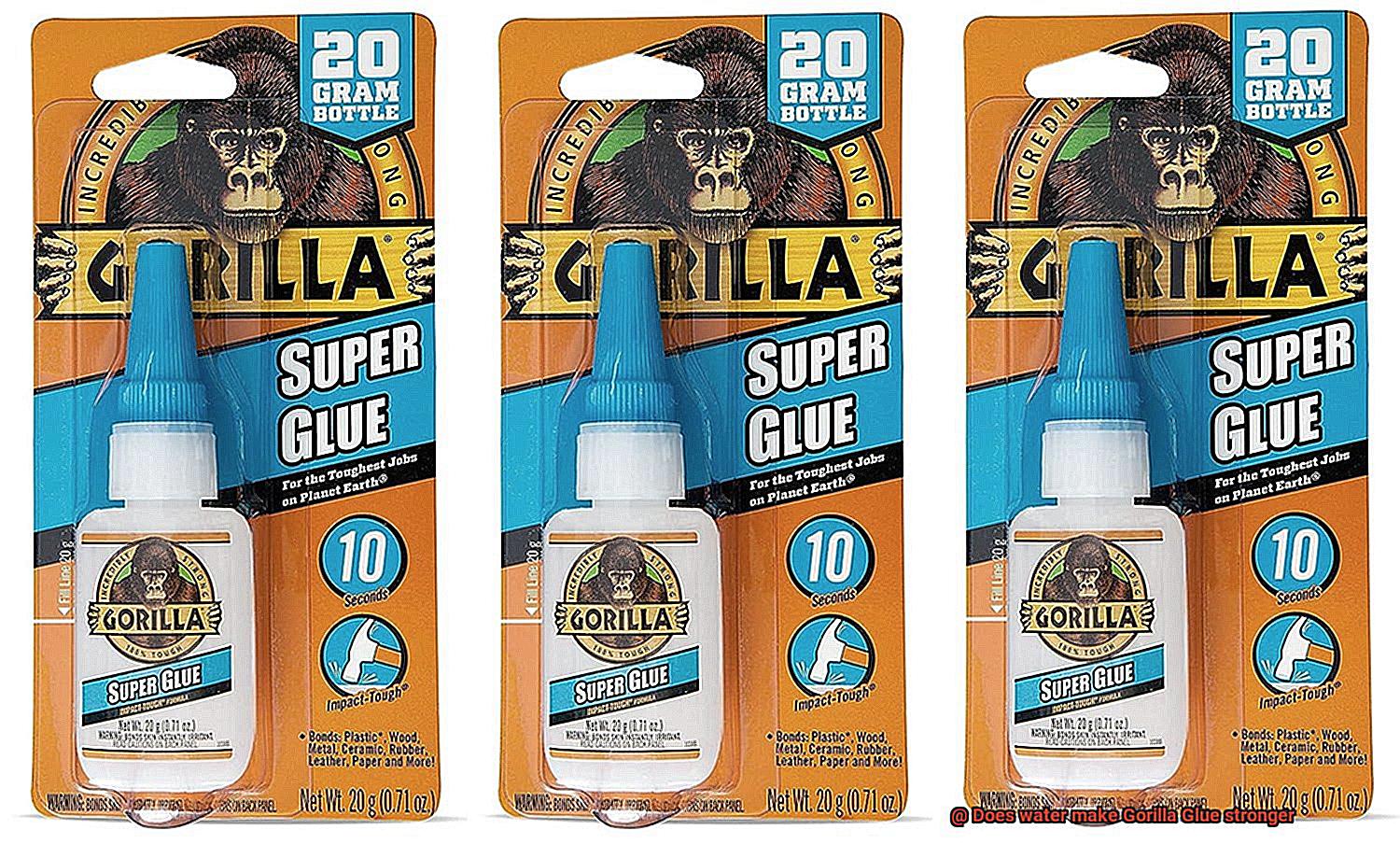
It’s worth noting that Gorilla Glue isn’t recommended for use in applications where it will be exposed to constant moisture or submerged in water. In such cases, a waterproof adhesive like marine epoxy would be more appropriate.
The Science Behind the Reaction of Water and Gorilla Glue
Gorilla Glue is a powerful polyurethane-based adhesive that can bond with almost any surface. This glue is activated by moisture, which triggers a chemical reaction called cross-linking. When the polyurethane molecules in the glue interact with water molecules, they generate heat that speeds up the curing process and strengthens the bond.
But can water make Gorilla Glue stronger? The answer is both yes and no. Adding just the right amount of water can activate the glue and increase its strength. However, adding too much water can dilute the adhesive and slow down the curing process, ultimately weakening the bond.
Several factors determine the optimal amount of water to use when working with Gorilla Glue. The materials being bonded and environmental conditions play a significant role. It is also essential to use distilled or deionized water instead of hard water containing minerals like calcium and magnesium that can interfere with the chemical reaction and weaken the bond.
So, to achieve optimal results, use just the right amount of moisture when working with Gorilla Glue. Remember that adding more water does not necessarily make it stronger. Instead, consider these tips:
- Use distilled or deionized water instead of hard water.
- Be mindful of the materials being bonded and the environmental conditions.
- Don’t add too much water – it can dilute the adhesive and weaken the bond.
Benefits of Adding Water to Gorilla Glue
Gorilla Glue is a popular choice due to its polyurethane base that activates with moisture. But did you know that adding water to Gorilla Glue can have some surprising benefits? As an expert on this topic, I’m here to break down all the benefits of adding water to Gorilla Glue and why it’s essential to follow the manufacturer’s instructions carefully.
One of the most significant benefits of adding water to Gorilla Glue is that it increases its bonding strength. When water is added, it causes the glue to expand and foam up, creating a stronger bond. This makes it perfect for use on surfaces that require a strong, reliable hold. Plus, the water reacts with the polyurethane base, causing it to harden and cure faster.
Another great benefit is that adding water can increase the working time of Gorilla Glue. This means you can take your time positioning and adjusting your materials before the glue sets. For larger projects that need more time to dry, adding water can be a lifesaver. It’s important to note that too much water can weaken the glue’s overall strength and compromise its performance. Therefore, it’s essential to follow the manufacturer’s instructions carefully.
Adding water to Gorilla Glue also reduces the amount of glue needed for a project. The glue expands and fills gaps more effectively, reducing the need for additional glue. This not only saves time but also money in the long run. Additionally, adding water can make Gorilla Glue easier to apply. The water thins out the glue, making it easier to spread evenly over surfaces. This is particularly helpful when working on intricate or uneven surfaces.
It’s crucial to use distilled or deionized water when adding water to Gorilla Glue. And be mindful of the materials being bonded and environmental conditions. Following the manufacturer’s instructions carefully will ensure that you achieve the best results.
Precautions to Take When Adding Water to Gorilla Glue
While this technique can be useful, it’s important to take precautions to ensure the best possible outcome.
Firstly, it’s important to only add water if necessary, as it can affect the glue’s strength. If you do decide to add water, use distilled water to eliminate any potential contaminants that could negatively impact the glue’s bonding ability.
Another crucial precaution is to not add too much water. Diluting the glue can significantly weaken its bonding strength, so only add a small amount of water – just enough to make the glue more workable. Once you’ve added water, stir the glue thoroughly to ensure that the water is evenly distributed throughout the glue and that it will bond properly.
Lastly, proper storage is essential after adding water to Gorilla Glue. Keep it in an airtight container and store it in a cool, dry place to prevent the glue from drying out and losing its bonding strength.
To summarize, here are the precautions to take when adding water to Gorilla Glue:
- Only add water if necessary
- Use distilled water
- Don’t add too much water
- Stir the glue thoroughly after adding water
- Store the glue properly in an airtight container in a cool, dry place
How to Use Water with Gorilla Glue for Maximum Strength
If you’re looking to create a strong and long-lasting bond with your DIY projects, Gorilla Glue is a great choice. But did you know that adding water to Gorilla Glue can make it even stronger? In this article, we’ll explore the best practices for using water with Gorilla Glue to achieve maximum strength.
Step 1: Dampen the Surfaces
To activate the bonding properties of Gorilla Glue, it’s important to dampen the surfaces that you’ll be gluing together. This can be done by lightly misting them with water or using a damp cloth. It’s crucial not to saturate the surfaces with water, as this can weaken the bond instead of enhancing it.
Step 2: Apply Gorilla Glue
Once the surfaces are damp, apply a thin and even layer of Gorilla Glue to one of them. Be mindful not to apply too much glue, as this can lead to weaker bonds and longer drying times. Remember that Gorilla Glue expands as it dries, so using just enough glue to cover the surface is key.
Step 3: Wipe Away Excess Glue
After pressing the two surfaces together firmly, any excess glue should be wiped away immediately with a damp cloth. This is because once the glue sets, it can be challenging to remove. By wiping away excess glue before it dries, you’ll ensure a neater finish.
Step 4: Clamp the Materials Together
To achieve maximum strength and durability, clamp the materials together firmly after wiping away excess glue. The pressure from the clamp will help create a strong bond between the surfaces. It’s recommended to clamp the materials together for at least an hour, although larger or more complex projects may require longer clamping times.
Step 5: Let It Dry Completely
Finally, let the glue dry completely before sanding or painting over it. Gorilla Glue will bond best when the temperature is between 60-77°F (15-25°C) and humidity is above 55%. If the temperature or humidity is too low, the glue may take longer to cure and may not bond as strongly.
Different Types of Gorilla Glue and Their Reactions with Water
Not all types of Gorilla Glue react the same way when exposed to water. In this article, we will delve into the different types of Gorilla Glue and their reactions with water.
Original Gorilla Glue
The Original Gorilla Glue is known for its water resistance and strong bonding power. When exposed to water, the glue expands and creates a foamy texture that fills gaps and provides an even stronger hold. This reaction occurs because the polyurethane in the glue reacts with the water in the air or on the surface being bonded. Therefore, adding a small amount of water to the glue can increase its bonding strength. However, excessive exposure to water can break down the bond and weaken its strength.
White Gorilla Glue
The White Gorilla Glue is designed for indoor use and has a shorter drying time than the Original Gorilla Glue. It also dries clear, making it ideal for projects where aesthetics matter. This type of Gorilla Glue is also water-resistant like the Original Gorilla Glue. Its resistance to water makes it suitable for use in damp environments like bathrooms and kitchens.
Super Glue
Super glue, also known as cyanoacrylate glue, forms a strong bond that can withstand moderate exposure to water. It dries quickly, making it perfect for small-scale projects that require immediate fixing. However, prolonged exposure to water can cause the bond to break down, making it unsuitable for applications that require long-term durability.
Epoxy
Epoxy is another type of Gorilla Glue that is renowned for its strength and durability. It consists of two parts – a resin and a hardener – that are mixed together before application. Once applied, epoxy forms a strong bond that is resistant to water, heat, and chemicals. Its resistance to water makes it ideal for use in areas that are frequently exposed to moisture like swimming pools, fountains, and fish tanks.
Construction Adhesive
Lastly, the Construction Adhesive is a heavy-duty adhesive that can withstand extreme weather conditions and heavy loads. It’s perfect for construction projects like installing drywall or tiles. This type of Gorilla Glue is also water-resistant, making it ideal for outdoor projects that require long-term durability.
Common Mistakes People Make When Using Water and Gorilla Glue Together
When it comes to home repairs, woodworking, and crafting, Gorilla Glue is a popular choice for many due to its strong bond and ability to withstand extreme temperatures and weather conditions. However, using water with Gorilla Glue can sometimes lead to unexpected results. As an expert in this area, I have compiled a list of common mistakes people make when using water and Gorilla Glue together.
Firstly, using too much water is a significant mistake that people often make. While water can activate the glue’s curing process, too much water can cause the glue to foam up and lose its strength. To avoid this, use a small amount of water – just enough to moisten the surface.
Another mistake people make is not allowing the glue to dry completely before sanding or painting over it. Gorilla Glue needs time to cure fully, and using it before it dries can weaken its bond and compromise its strength. So be patient and let the glue dry completely before moving on to the next step.
In addition, not applying enough pressure is another mistake that people make. Gorilla Glue requires pressure to achieve maximum bonding strength. Not applying enough pressure can result in a weak bond that may come apart over time. It is crucial to clamp or apply pressure to the glued surfaces for at least 1-2 hours.
Lastly, using Gorilla Glue on wet surfaces is another common mistake people make. Gorilla Glue works best on dry surfaces. Applying it on wet surfaces can dilute the glue’s effectiveness and weaken its bond. So, it is recommended to wait until the surface is completely dry before applying Gorilla Glue.
Alternatives to Using Water with Gorilla Glue
Gorilla Glue is an incredibly effective adhesive, but the traditional method of activating it with water may not always be feasible or practical. Fear not, as there are alternatives to using water with Gorilla Glue that can still produce a strong and secure bond.
One such alternative is to use a damp cloth or sponge. This approach allows for more controlled application of moisture and prevents excess water from diluting the glue. It is important to note, however, that the cloth or sponge should be only slightly damp and not dripping wet.
Another option is to use a spray bottle filled with water. This method is particularly helpful for working in hard-to-reach areas or bonding uneven surfaces, as the mist from the spray bottle can prevent excess water from diluting the glue.
If you prefer not to use water at all, you can try using a dampened cotton swab or rubbing alcohol instead. These alternatives can still provide enough moisture to activate the glue without the risk of over-saturation.
When deciding which activation method to use, it’s crucial to consider the surface being bonded. For instance, using rubbing alcohol on a sensitive surface may cause damage. Similarly, using a spray bottle on porous materials may not be the best option.
OpncPeHjNWQ” >
Also Read: Is Gorilla Super Glue Waterproof?
Conclusion
In conclusion, the addition of water can indeed make Gorilla Glue stronger, but it’s crucial to use the right amount. Overdiluting the glue can weaken its bonding strength and compromise the overall effectiveness of your project. The optimal quantity of water required depends on various factors such as environmental conditions and the materials being bonded.
To ensure a successful outcome, it’s essential to follow the manufacturer’s instructions carefully and use distilled or deionized water instead of hard water that contains minerals that can interfere with the chemical reaction. Adding water to Gorilla Glue has several benefits, including increasing its bonding strength, reducing the amount of glue needed for a project, and making it easier to apply.
However, it’s important to take precautions when using water with Gorilla Glue. These include not adding too much water, stirring the glue thoroughly after adding water, and storing it properly in an airtight container. Different types of Gorilla Glue have varying reactions to water. Original Gorilla Glue is known for its resistance to moisture and strong bonding power when exposed to wetness.
White Gorilla Glue is suitable for indoor use as it dries clear while maintaining its resistance to moisture. Super glue can withstand moderate exposure to water but is unsuitable for long-term durability. Epoxy is perfect for areas frequently exposed to moisture like swimming pools and fountains due to its resistance to heat, chemicals, and wetness.
When using water with Gorilla Glue, there are common mistakes people make that you should avoid at all costs. These include using too much water, not allowing enough time for drying before sanding or painting over it, not applying enough pressure during clamping, and using it on wet surfaces.
Lastly, if you don’t want to use water with Gorilla Glue or prefer an alternative activation method that suits your needs better – there are other options available such as using a damp cloth or sponge, a spray bottle filled with water or rubbing alcohol.

